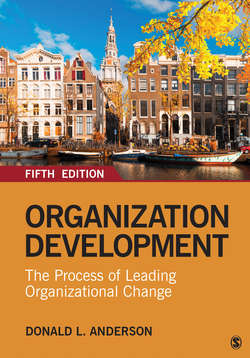Читать книгу Organization Development - Donald L. Anderson - Страница 23
The Application of a Toolkit
ОглавлениеMany OD practitioners speak of the OD “toolkit.” It is true that OD does occasionally involve the application of an instrumented training or standard models, but it is also more than that. To confuse OD with a toolkit is to deny that it also has values that complement its science and that each OD engagement has somewhat unique applications. As Feyerherm and Worley (2008) write,
Too many clients ask, “How do I do x?” or “What tools are available to change y?” and too many OD practitioners, in an effort to be helpful, give the client what they want instead of what they need. The “tool” focus ignores assessment and risks, providing a band-aid in organizations without attacking core problems. (p. 4)
Students of OD who seek out tools without being knowledgeable about the OD process and the reasons for the use of the tools are likely to find themselves having learned how to use a hammer and enthusiastically go around looking for nails (only to realize that not every problem looks like the same nail). As Schein (1999) puts it,
Knowledge of many different kinds of interventions does not substitute for the knowhow of sensing what is needed “right now.” . . . In fact, having a skillset of interventions “at the ready” makes it harder to stay in the current reality because one is always looking for opportunities to use what one believes oneself to be good at. (p. 245)
OD is more than a rigid procedure for moving an organization, team, or individual from point A to point B. It involves being attuned to the social and personal dynamics of the client organization that usually require flexibility in problem solving, not a standardized set of procedures or tools. In Chapter 3 we will discuss the values that underlie OD to better understand the fundamental concepts that explain how and why OD practitioners make the choices they do.
